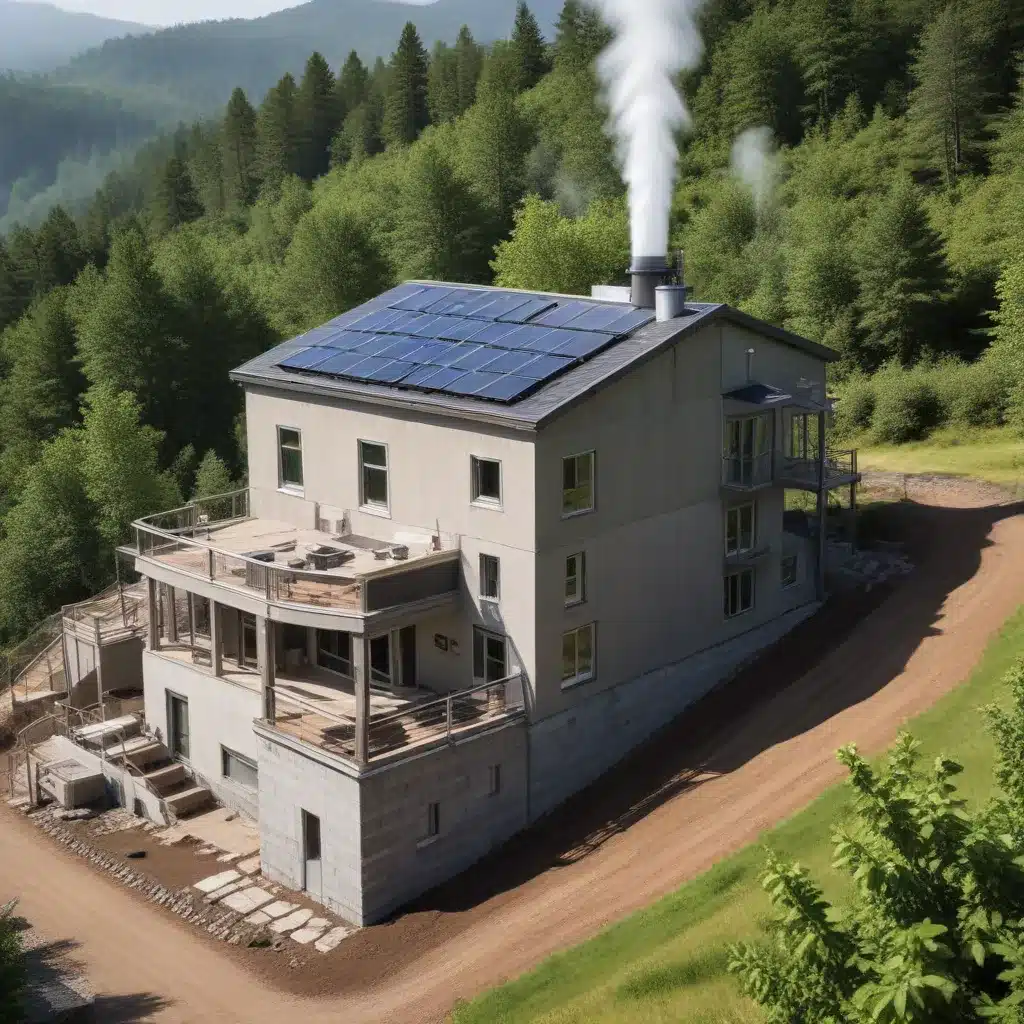
Harnessing Geothermal Energy for Heating, Cooling, and Thermal Energy Storage in Sustainable Design
As the European Union accelerates its transition to clean energy, the role of geothermal energy in sustainable building design is gaining increasing prominence. Geothermal energy, the heat stored within the Earth’s crust and mantle, offers a reliable, renewable, and versatile resource that can be harnessed for a wide range of applications, from heating and cooling to thermal energy storage. This article explores how geothermal energy is being integrated into the built environment, highlighting its environmental benefits and the innovative technologies driving its adoption across Europe.
Heating and Cooling Systems
Ground-Source Heat Pumps
One of the most widespread applications of geothermal energy in the built environment is the use of ground-source heat pumps (GSHPs). These systems leverage the relatively constant temperature of the shallow subsurface, typically between 40°F and 70°F (4.5°C and 21°C), to efficiently heat and cool buildings. By exchanging heat with the ground, GSHPs can achieve significantly higher energy efficiency compared to traditional air-source heat pumps, reducing both energy consumption and greenhouse gas emissions.
GSHPs can be designed with either closed-loop or open-loop systems. Closed-loop systems circulate a fluid, such as water or a water-glycol mixture, through a network of buried pipes, while open-loop systems draw groundwater directly from an aquifer. The choice between these two approaches is often determined by local soil and groundwater conditions, as well as available land area.
Geothermal Direct Use
Beyond heat pumps, geothermal energy can also be used directly for heating and cooling through geothermal direct use systems. These systems tap into deeper, higher-temperature geothermal resources, typically found several hundred to thousands of meters below the surface, to provide heat directly to buildings or industrial processes. This approach is particularly well-suited for large-scale applications, such as district heating networks, where the thermal energy can be distributed to multiple buildings or facilities.
Thermal Energy Storage
Geothermal energy’s versatility extends beyond heating and cooling systems, as it can also be integrated with thermal energy storage technologies to enhance the flexibility and efficiency of sustainable building design.
Borehole Thermal Energy Storage (BTES)
One such technology is borehole thermal energy storage (BTES), which uses a network of boreholes drilled into the ground to store thermal energy. During periods of excess heat, such as from solar energy or industrial processes, the heat is injected into the ground and stored for later use. When heating is required, the stored thermal energy is then extracted from the ground and distributed to buildings or other applications.
Underground Thermal Energy Storage (UTES)
Another option is underground thermal energy storage (UTES), which utilizes larger-scale underground reservoirs, such as aquifers or rock formations, to store thermal energy over longer periods. UTES systems can provide seasonal storage, allowing excess summer heat to be stored and used for heating during the winter months, or vice versa.
Environmental Benefits of Geothermal Systems
The integration of geothermal energy into sustainable building design offers significant environmental benefits, contributing to the European Union’s ambitious goals for greenhouse gas emissions reduction and the transition to renewable energy sources.
Renewable Energy Generation
Unlike fossil fuel-based heating and cooling systems, geothermal technologies harness a renewable and perpetual source of energy, the Earth’s internal heat. This not only reduces the reliance on finite and polluting resources but also provides a reliable and consistent source of energy, unaffected by seasonal or weather-related fluctuations.
Greenhouse Gas Emissions Reduction
Geothermal systems, particularly when combined with other renewable energy sources, can dramatically reduce the carbon footprint of buildings. By eliminating the need for fossil fuel-based heating and cooling, geothermal technologies can contribute to the EU’s overall decarbonization efforts, supporting the region’s goal of achieving climate neutrality by 2050.
Geothermal Resource Exploration and Assessment
Unlocking the full potential of geothermal energy in sustainable building design requires a thorough understanding of the available geothermal resources and their characteristics. This entails comprehensive geothermal resource mapping and advanced site characterization techniques.
Geothermal resource mapping leverages geological, geophysical, and geochemical data to identify and delineate areas with promising geothermal potential, both in terms of shallow and deep resources. Meanwhile, site characterization techniques, such as drilling, logging, and reservoir testing, provide detailed insights into the subsurface conditions, including temperature, permeability, and fluid properties.
By combining these exploration and assessment methods, project developers can optimize the design and deployment of geothermal systems, ensuring their long-term viability and maximizing the environmental benefits.
Integration of Geothermal Energy in Sustainable Buildings
Geothermal energy can be seamlessly integrated into sustainable building design through a holistic approach that combines passive design strategies and hybrid heating and cooling systems.
Passive design strategies, such as optimizing building orientation, incorporating thermal mass, and leveraging natural ventilation, can reduce the overall energy demand of a building, thereby minimizing the required capacity of the geothermal system. This synergistic approach enhances the overall efficiency and sustainability of the built environment.
Furthermore, hybrid systems that integrate geothermal heat pumps with other renewable energy technologies, such as solar photovoltaics or thermal energy storage, can further optimize the energy performance and resilience of sustainable buildings. This diversified approach allows buildings to draw upon multiple clean energy sources, ensuring reliable and flexible heating, cooling, and power supply.
As the European Union continues to lead the global transition to a low-carbon future, the integration of geothermal energy in sustainable building design will play a crucial role in achieving the region’s energy and climate goals. By harnessing the versatility and environmental benefits of this renewable resource, architects, engineers, and policymakers can create more energy-efficient, resilient, and sustainable built environments for the future.







